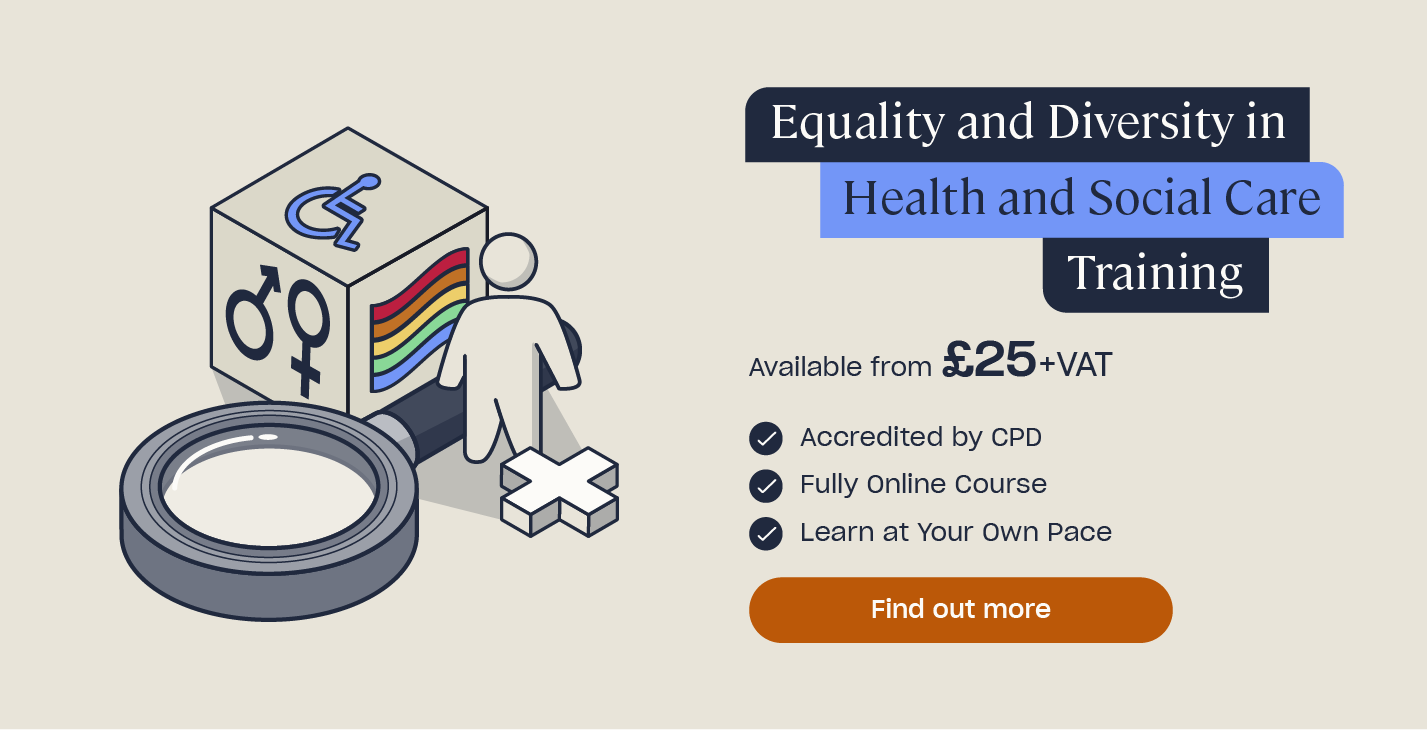What are Gender Health Inequalities?
There are a number of inequalities throughout the health and social care sector that have an impact on the health of many. Gender is one such inequality, with research showing a significant gender health gap in the UK, leading to poorer health outcomes for women.
This article will explain the meaning of gender inequalities, why the relationship between health and gender is so important, how gender affects healthcare, and what the women’s health strategy is.
What are Gender Health Inequalities?
To begin answering this question, it is important to understand that there are differences between the terms sex and gender. The World Health Organisation (WHO) describes the term gender as referring to “socially constructed characteristics of women and men – such as norms, roles and relations of and between groups of women and men”.
Sex on the other hand is described as being “mainly associated with physical and physiological features including chromosomes, gene expression, hormone level and function, and reproductive and sexual anatomy.” There are connections between both sex and gender and both can lead to inequalities in healthcare.
Gender health inequality means having unequal access or opportunity to access healthcare services and treatment due to your sex or gender, leading to poorer health outcomes. There are many other factors that can make someone more susceptible to inequalities in healthcare. For more information on this topic, take a look at our article – What are inequalities in health and social care?
The WHO states that inequalities in healthcare disproportionately affect more women and girls than men and boys. Equality and diversity is a key part of being able to deliver high-quality, person-centred care and support to all throughout the sector. Yet health services within the UK lack vital knowledge and services to equally support the needs of both men and women.
Want to Learn More?
For further insights into the values that under-pin patient care, check out our Equality and Diversity and Person-Centred Care training courses.
Understanding why such inequalities exist requires a much wider perspective on the gender inequalities that exist in many areas of life. The history of learning and power, particularly in medicine was very much focussed on men and heavily influenced by their opinions, perspectives and beliefs.
This amongst many other factors has led to a lack of knowledge and understanding, not only around health concerns that affect only women, but also the different ways men and women can be affected by the same condition. Knowing such inequality exists makes it all the more important to understand the relationship between sex, gender and health.

Why is the Relationship Between Gender and Health Important?
Understanding how an individual’s health can be affected based on their sex or gender is incredibly important in being able to ensure appropriate treatment, services and education are available to support them towards a positive outcome. Both of which can have a significant impact on a person’s risks and susceptibility and to illness.
For example, the relationship between gender and health may also interlink with social inequality. Many women and girls are given less autonomy over their bodies, have less decision making power and face greater discriminatory attitudes from healthcare providers, often making it harder for them to access the services and treatment they need, or receiving an accurate or timely diagnosis.
Gender can also increase a person’s exposure to instances of domestic violence, emergency situations, work injuries, cigarette and alcohol intake and misuse, and certain risk taking behaviours. These are just a few examples, but understanding gender norms, socialisation and societal roles can create a better understanding of the links between gender and health.
The relationship between sex and health affects a person’s risk of disease, disease progression, the treatments given and the overall health outcome. For example, a particular enzyme found in men that binds to the SARS-COV2 virus (COVID-19) may be responsible for more severe outcomes and hospitalisations for men with the virus than women.

What are the Quality of Care Differences Between Men and Women?
How a person views the quality of care that they have received can be subjective and will depend on their individual circumstances and perspective. However, quality of care should be based on core values, including equality and diversity, dignity, respect and compassion in care.
Gender bias means having a preference of one gender over the other. It can be widespread in the health and social care sector and have a negative effect on health outcomes and systemic practices.
Some examples include:
- Poor understanding of women’s health issues leading to delayed or misdiagnosis, such as overlooking potential causes of abdominal pain during a woman’s menstrual cycle, or not taking certain symptoms seriously if a woman is going through the menopause. You can learn about some of the common myths and facts around menopause here.
- Misdiagnosing a heart attack in a woman due to the idea that they mainly occur in men.
- Being less believing of certain symptoms or complaints of pain depending on a person’s gender or character. Such as assuming a ‘manly’ man is being stoic whereas a man who appears less ‘manly’ is being dramatic or emotional.
- Treating a patient less favourably because they are gender diverse. Transgender individuals, for example, often experience high levels of mental health illness, due to the discrimination and stigma they face, including within healthcare settings.
How Does Gender Affect Health Care?
We have discussed how gender and sex can affect a persons’ health and the healthcare they are likely to receive, often coming down to reasons such as physiological and social factors. We have also looked at some examples of how gender bias impacts the quality of care an individual receives.
When it comes to healthcare itself, gender and sex pose risks of vast inequality. Some reasons for this include:
- A lack of representation of women during clinical trials.
- A lack of knowledge on women’s health issues.
- Stigma associated with gender norms.
- Poor understanding of how conditions affect men and women differently.
- Gender bias on a systemic level and amongst healthcare professionals.
A combination of factors are responsible for all inequalities in healthcare, including gender inequality and the issues are often complex and widespread.

6 Ways That Gender Affects Health
The reasons why certain diseases and conditions are more common in one particular sex or gender than the other can be complex. Factors such as genetics, behaviours and hormones can all play a part. Take, for example, six common illnesses that both men and women are affected by.
By understanding the complex relationship between sex, gender and health, professionals can paint a picture of which groups are most impacted by which illness. Some examples of conditions that are more common in one sex over the other include:
Men
- Heart disease.
- Parkinson’s disease.
Women:
- Alzheimer’s disease.
- Urinary tract issues.
- Osteoporosis.
- Strokes.
What is the Women’s Health Strategy?
Women’s health is greatly impacted by inequalities in healthcare, from being underrepresented in research studies to a lack of understanding of certain female-specific issues. A lack of quality and availability of women’s health services leads to poorer outcomes for many, prompting the Government to take formal action.
In 2021, Nadine Dorries, the Minister for Patient Safety, Suicide Prevention and Mental Health, addressed the House of Commons, stating the Government would be creating a government-led national women’s health strategy for England. The first of its kind.
The Government made a call for evidence and emphasised the need to understand the real experiences of the healthcare system from women of all ages and backgrounds. The experiences provided were intended to help focus understanding on six core themes, believed to connect the different areas of women’s health throughout all stages of life. These are:
- Placing women’s voices at the centre of their health and care.
- Improving the quality and accessibility of information and education on women’s health.
- Ensuring the health and care system understands and is responsive to women’s health and care needs across the life course.
- Maximising women’s health in the workplace.
- Ensuring that research, evidence and data support improvements in women’s health.
- Understanding and responding to the impacts of Covid-19 on women’s health.
The aim of this strategy is to tackle the deep-rooted issues within the healthcare system to improve the wellbeing and health outcomes of women and girls, breaking down the barriers faced to improve equal access and support for all.
We all have the right to be treated equally, regardless of our sex or gender. By recognising the systemic issues within the health and social care sector and taking action to tackle the deep-rooted inequalities, the future may offer greater health equality for all.
Further Resources:
- What are Difficult Conversations in Health and Social Care?
- Safeguarding Training Courses
- How to Promote Empowerment in Health and Social Care
- Defining the Different Types of Discrimination in Health and Social Care







